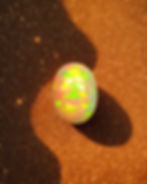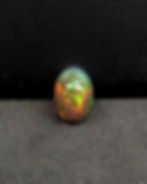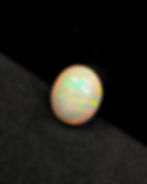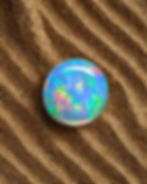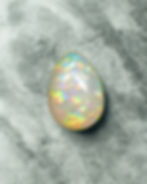
Loose Natural Ethiopian Opal Gemstones
You May Also Like
Discover natural Ethiopian opal gemstones by Kanchan Global, featuring a diverse range of shapes and styles. From fancy-shaped opals for creative designs to opal pairs and layouts for symmetrical jewelry, our collection includes calibrated faceted and cabochon opals for precision jewelry making. Whether you're designing rings, earrings, or pendants, these gemstones showcase stunning play-of-color. Available in bulk and wholesale, perfect for custom and high-volume jewelry production.
Your One-Stop Source for Ethiopian Opals
At Kanchan Global, we bring you:
-
Loose faceted & cabochon opals for precision designs
-
Fancy shapes, opal pairs & layouts for custom projects
-
Calibrated sizes ideal for production and repeatable settings
-
Sourced from ethical Ethiopian mines
-
Ready for bulk orders & wholesale buyers
Whether you’re creating a bespoke engagement ring or a high-volume jewelry line, you’ll find the right opals here.
Best Opal for Rings, Earrings & Pendants
These gemstones are perfect for:
-
Rings—solitaire, stackable, or halo
-
Earrings—studs, drops, and danglers
-
Pendants—everyday wear or statement styles
Their fiery brilliance adds elegance to every piece.
Bulk & Wholesale Available for Designers
We specialize in serving:
-
Custom jewelry makers
-
Retailers & wholesalers
-
Etsy & boutique brands
Enjoy volume pricing, layout customization, and global shipping.
For bulk orders, contact: kg.kanchanglobal@gmail.com
FAQs—Ethiopian Opal Gemstones
1. What is Ethiopian opal?
Ethiopian opal is a type of precious opal found mainly in Ethiopia, known for its vibrant play-of-color.
2. Where is Ethiopian opal mined?
Most Ethiopian opals come from the Wollo and Shewa regions of Ethiopia.
3. Is Ethiopian opal natural?
Yes, Ethiopian opals are naturally formed gemstones.
4. How is Ethiopian opal different from Australian opal?
Ethiopian opals often absorb water and can change appearance temporarily, unlike the more stable Australian opals.
5. Is Ethiopian opal durable?
It is relatively soft (5.5–6.5 Mohs) and can crack or scratch if not handled carefully.
6. Can Ethiopian opal get wet?
It can absorb water, which may cause temporary color changes, but it usually returns to normal once dry.
7. Does Ethiopian opal need special care?
Yes, avoid chemicals, extreme temperatures, and dry storage to prevent cracking.
8. Is Ethiopian opal treated?
Most are untreated, but some may be smoked or dyed—always ask for certification.
9. What colors does Ethiopian opal show?
They display a range of colors, including red, green, blue, and yellow flashes.
10. Is Ethiopian opal valuable?
Yes, high-quality Ethiopian opals are valuable, especially those with strong play-of-color and clarity.
Discover the elegance of our Ethiopian Opal Jewelry Collection, where each piece tells a unique story. Browse through our exquisite selection and find the perfect opal jewelry to add to your collection!















